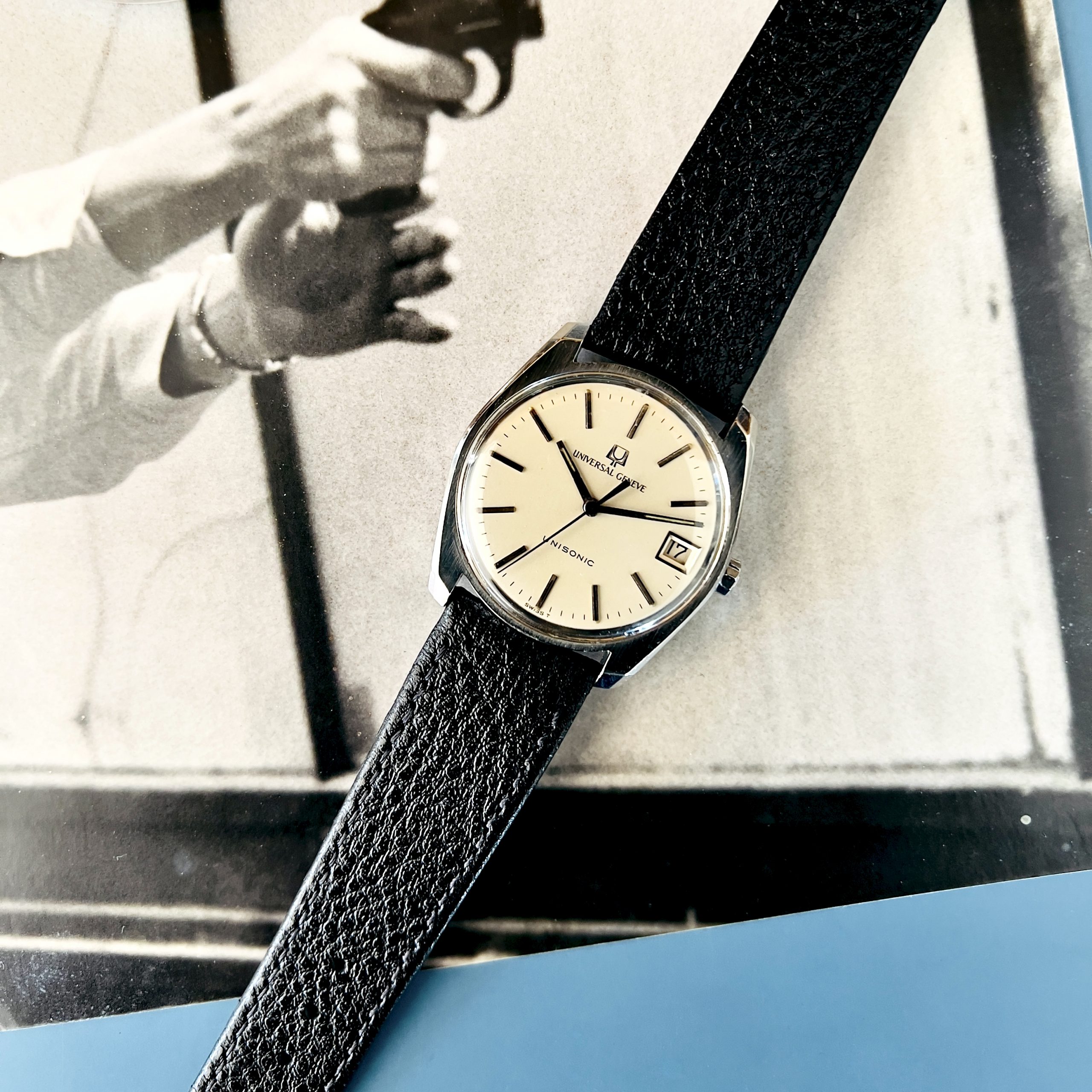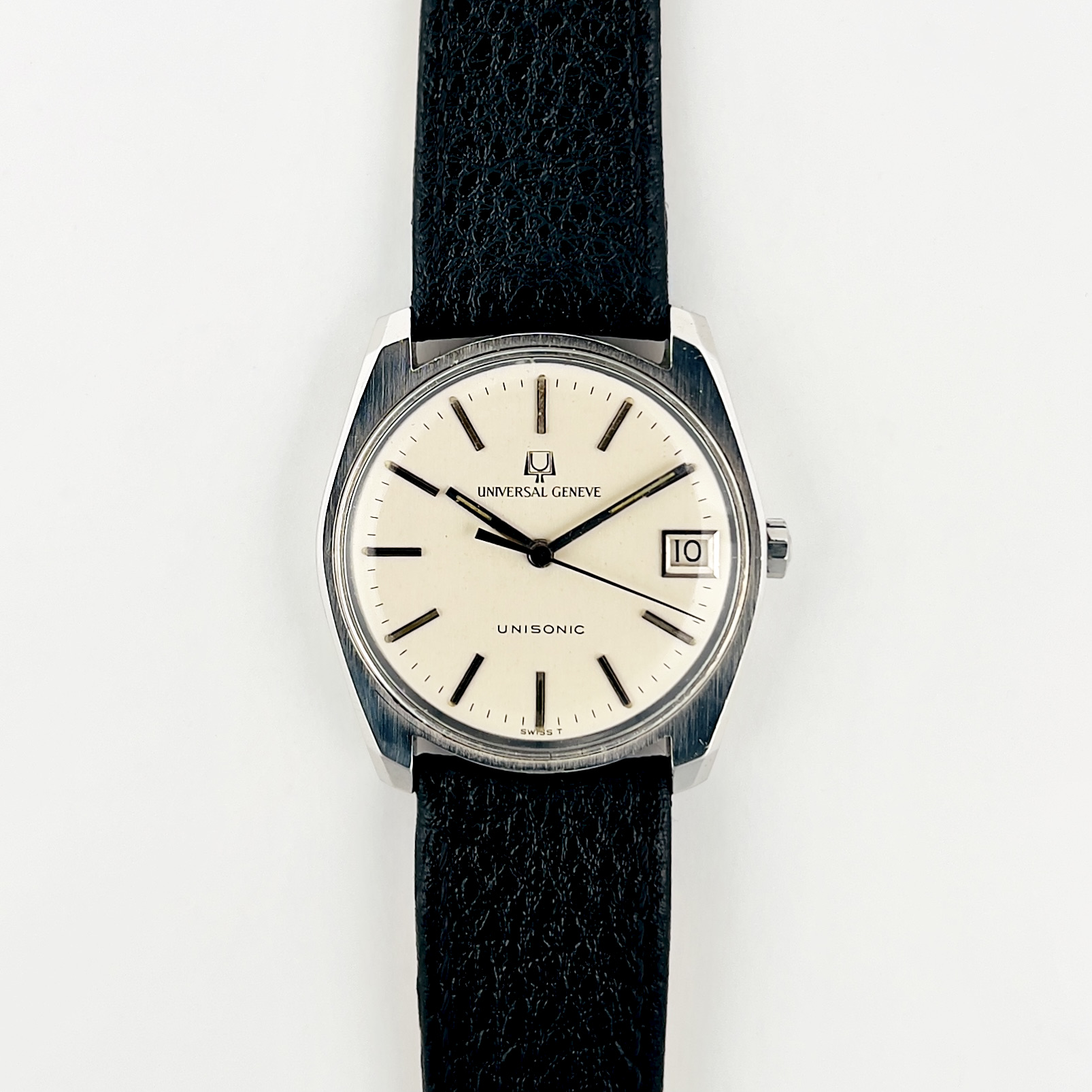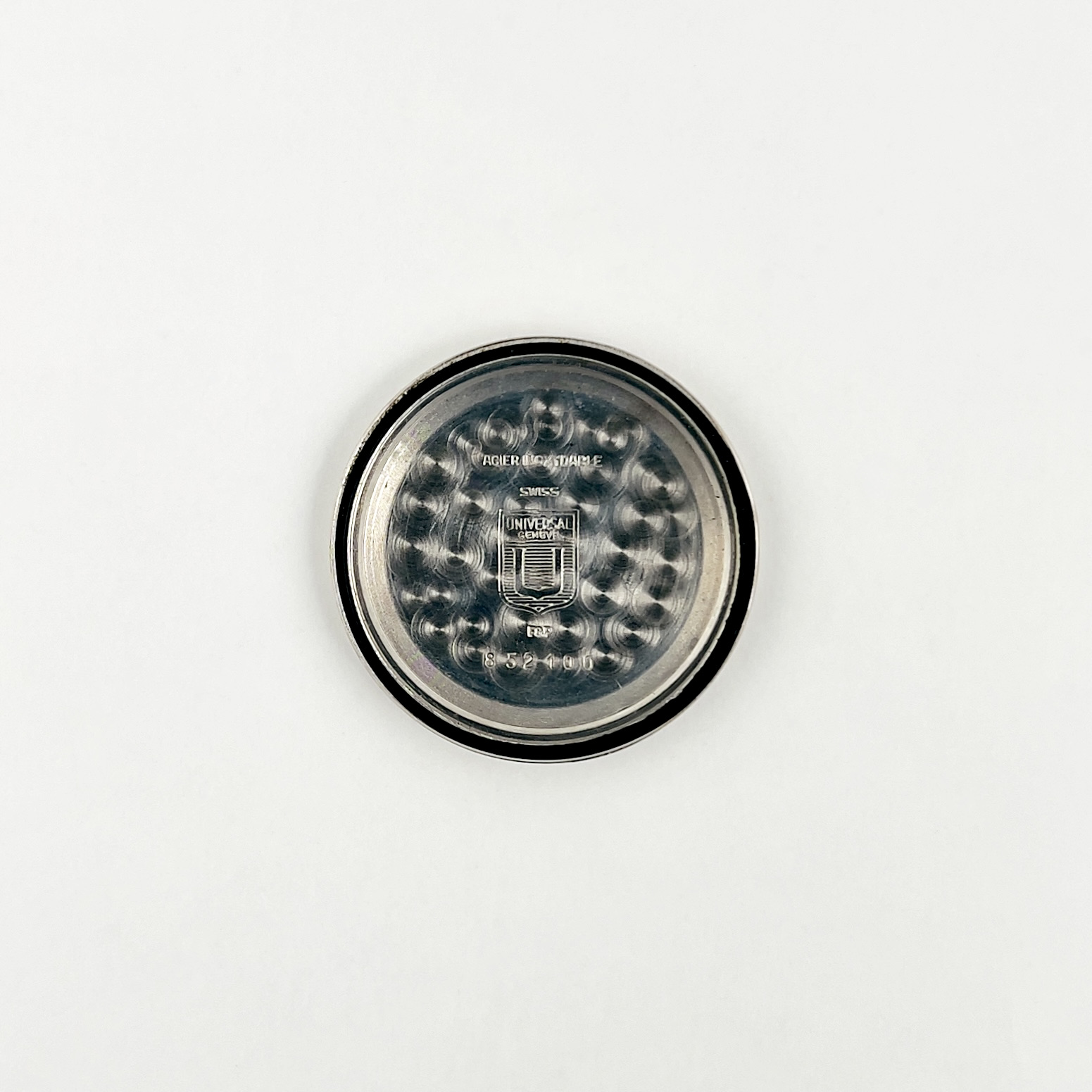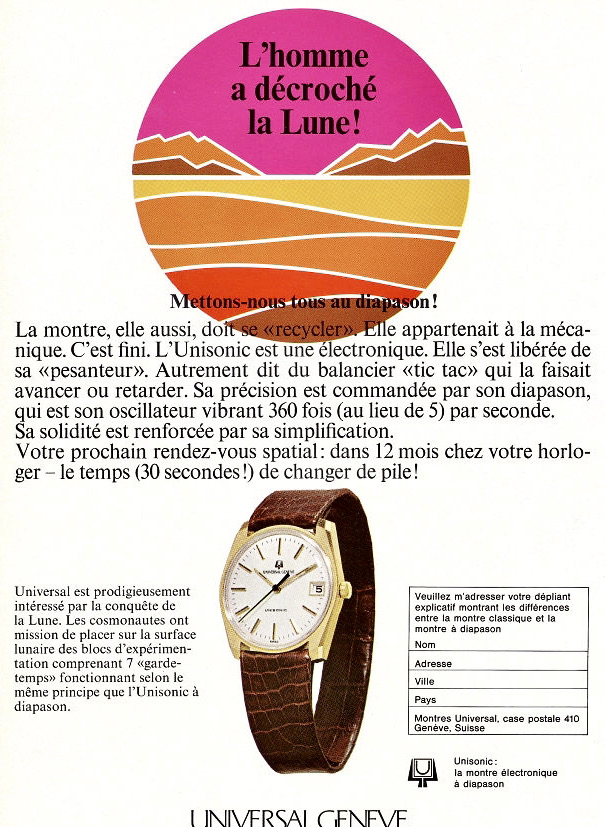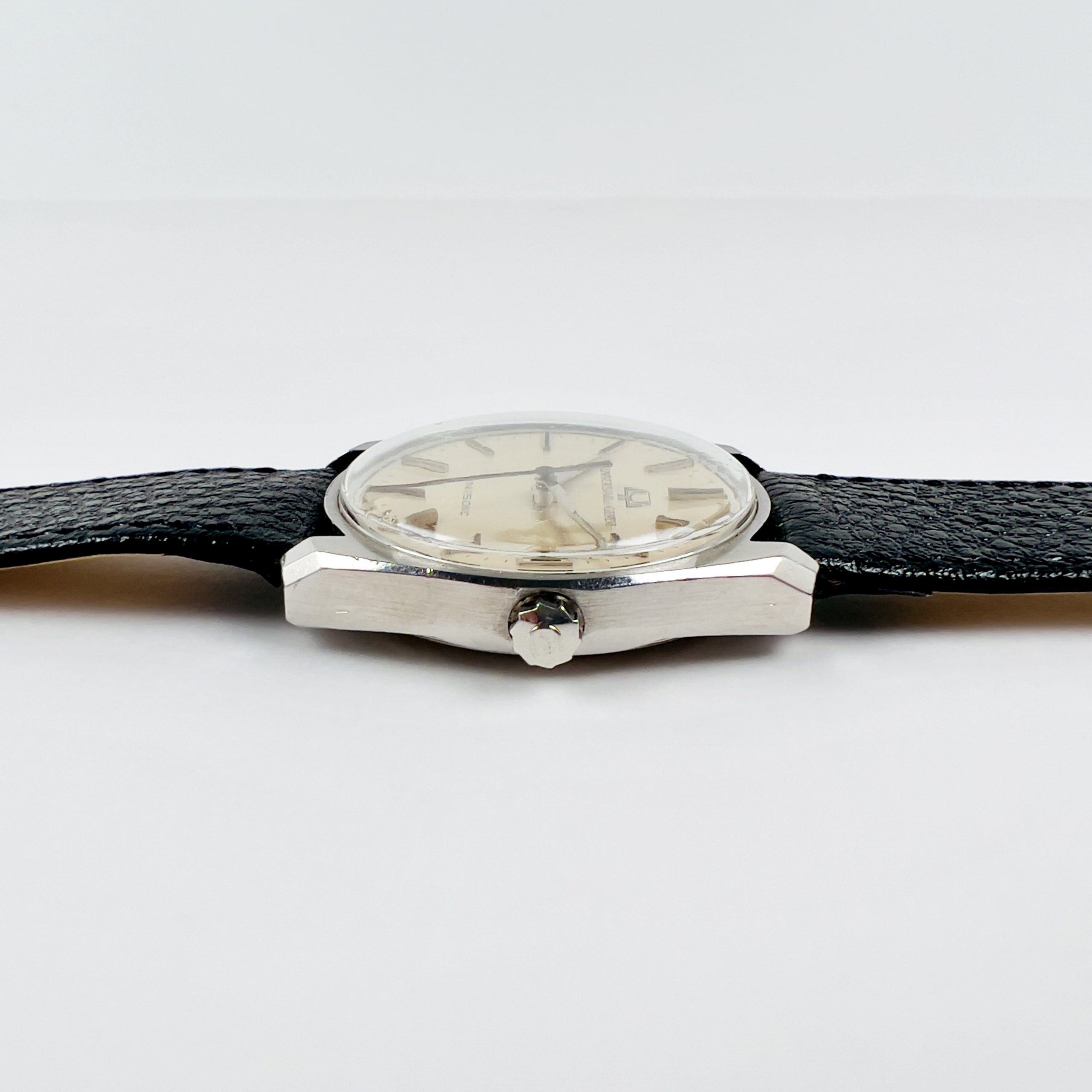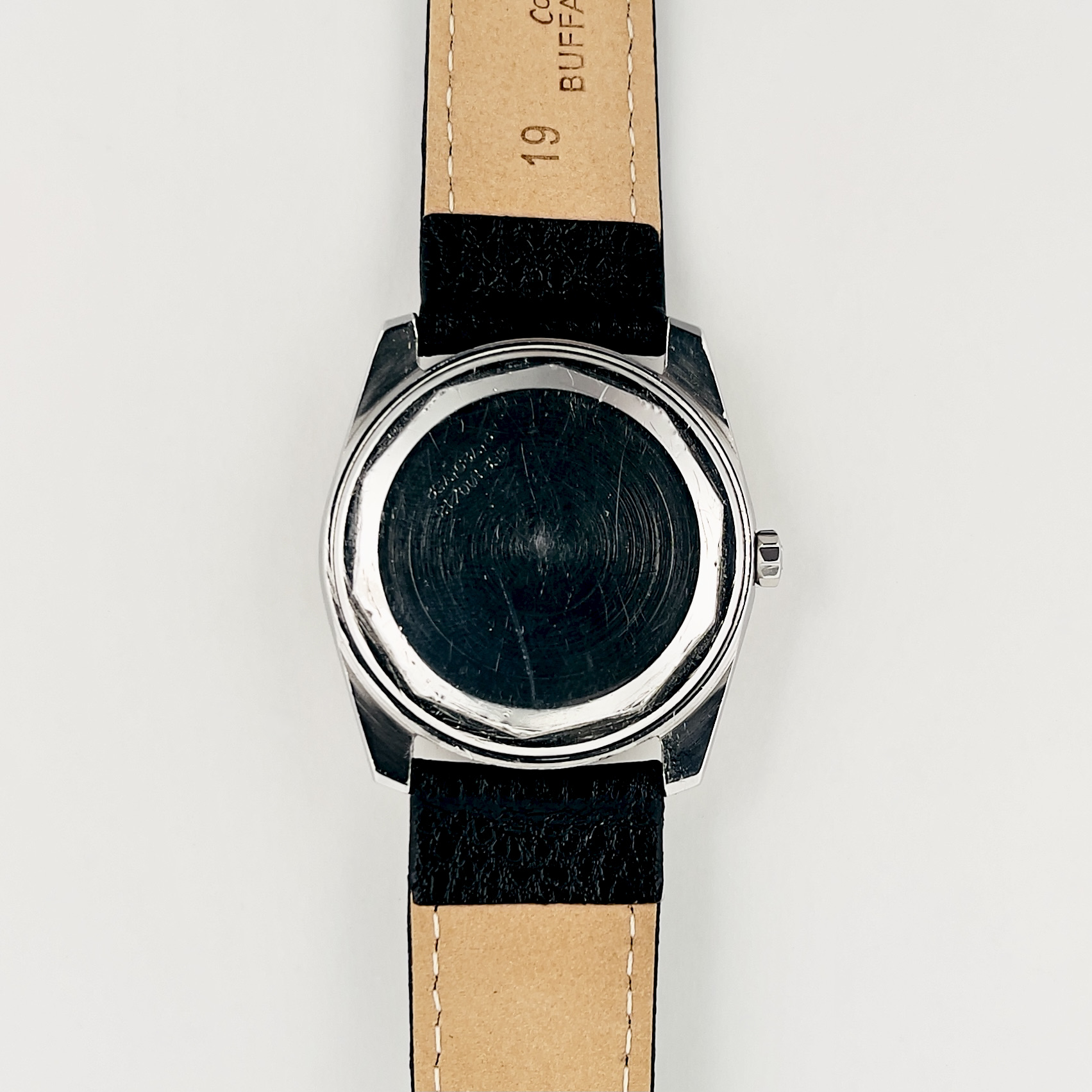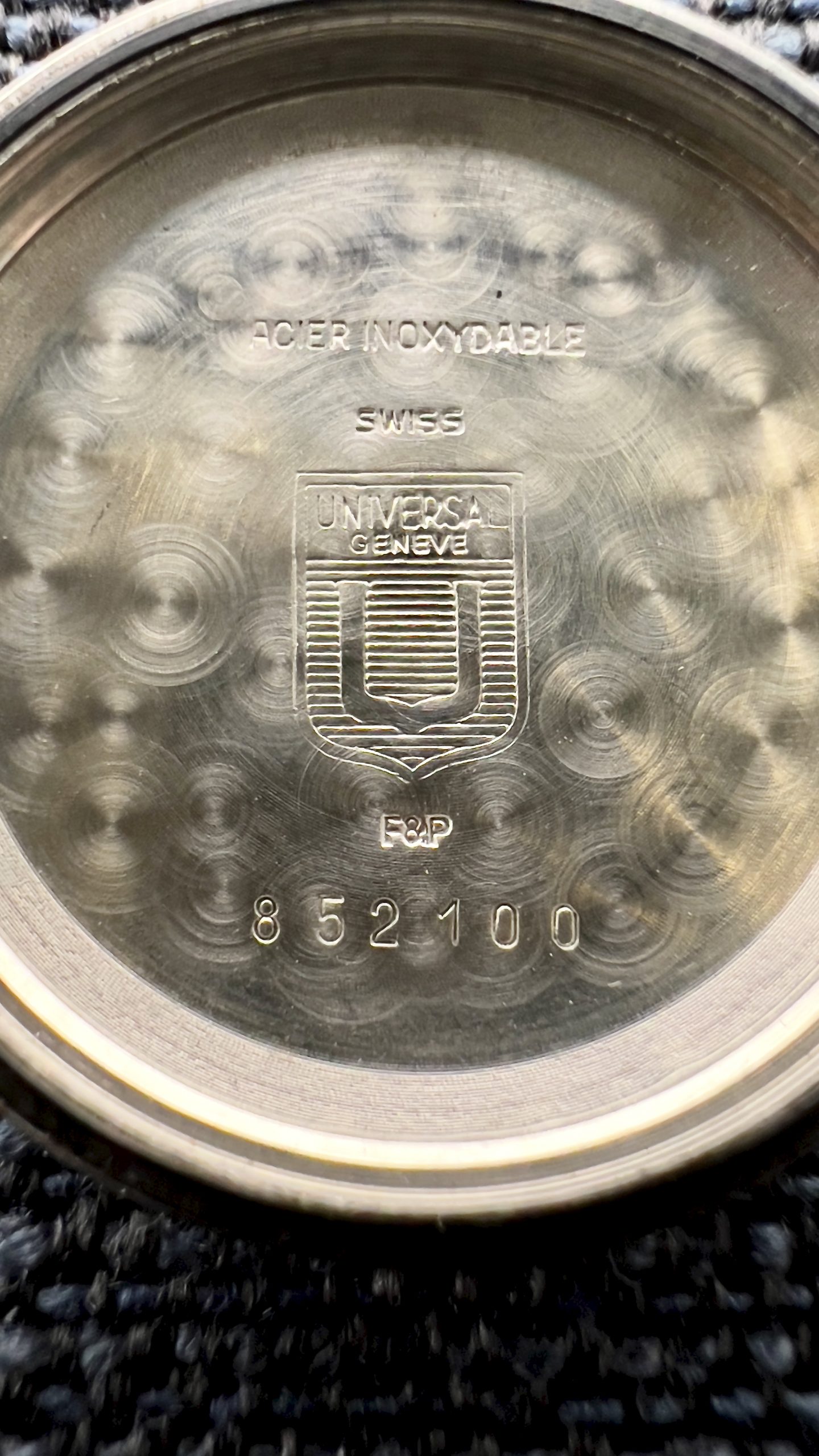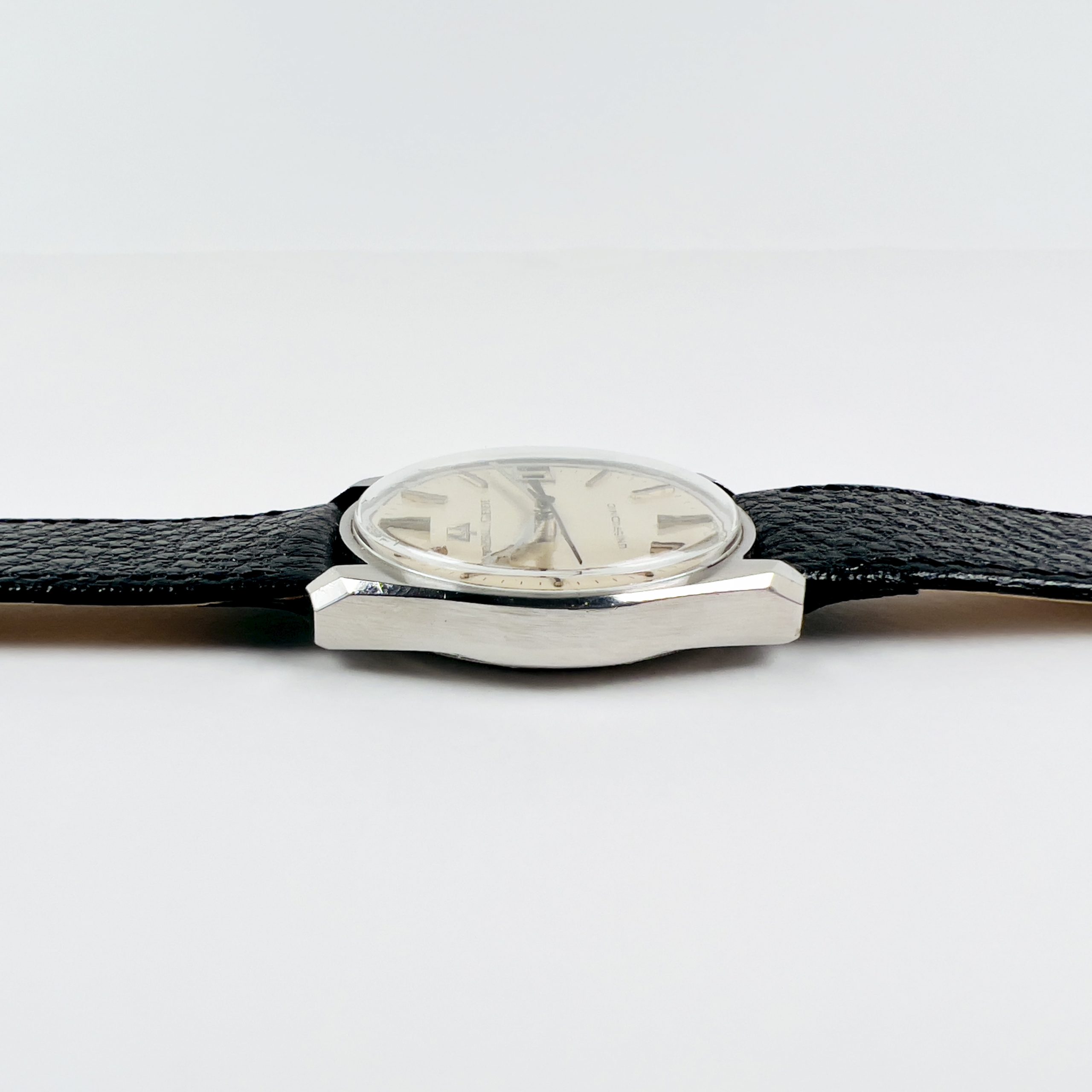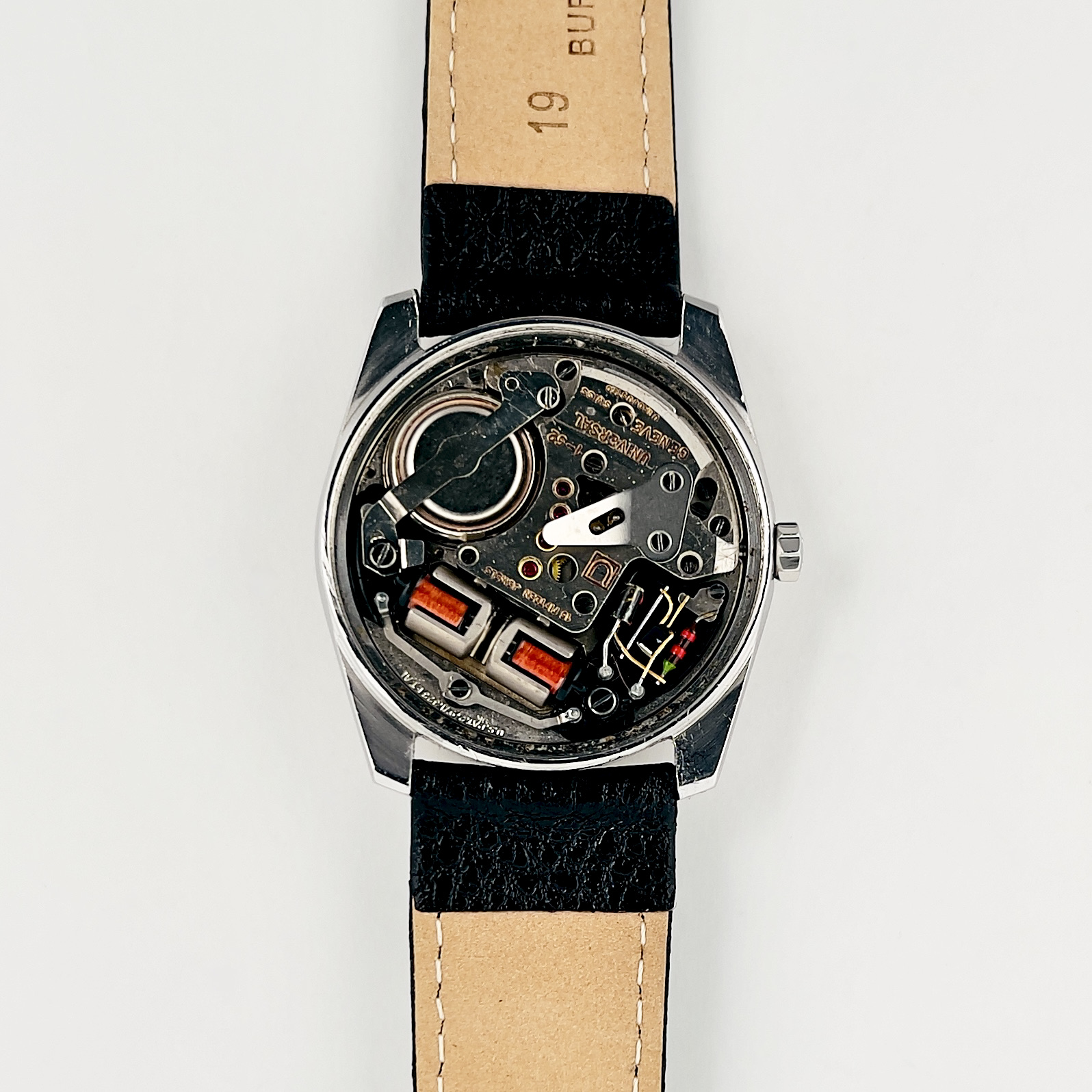-
UNIVERSAL GENÈVE
UNISONIC DATE
CIRCA 1970
-
-
Bulova's introduction of the Accutron 218 movement in 1965 intrigued and impressed brands and consumers, and Universal Genève sought to implement this new technology a decade before the quartz revolution changed the watchmaking game forever. The Unisonic was the result.
-
The Accutron 218 simplified the now iconic Accutron Spaceview 214 movement, designed by Max Hetzel, and whose tuning fork ensured increased accuracy by avoiding the balance wheel. Parts were interchangeable, and the Accutron 218's two coils allowed for easier and cheaper maintenance. It even incorporated a convenient 12 to 6 quick-catch capability, making daily wear easier.
-
But of course, Universal Genève couldn't just take a Bulova draft and run with it. Every movement that equipped an Unisonic received specific Universal treatment: parts that were not actually produced by Universal Genève were finished in Switzerland, a meticulous attention to detail that made the Unisonic one of the most expensive electric watches of its time. The result was a stunning and innovative watch that fused Universal Genève's signature Swiss design with futuristic American mechanical design, a marriage cleverly designed by the unique UG/Accutron logo printed on the watch face.
-
This Unisonic is relatively clean, an excellent example of the model. Combining the elegance of Universal Genève with true technological innovation, it is a piece of watchmaking history, a relic of that transitional period between the introduction of the diapason and the quartz revolution.
This example has the original glass and has never been polished. Indeed, it is engraved in its center with the letter "U" of Universal. It is rare to find such a piece on the market.
It is a model with a "Date" date
-
The case back has the original reference number, 852100/13, and the serial numbers 2729752 on the case back dating the watch to around 1970. The logo and the inscription "Stainless Steel" typical of that time can be found inside.
The case back is stamped with the letters "FP" for Favre et Perret. It is one of the most prestigious manufacturers of watch cases, working in particular for the companies Audemars Piguet and Patek Philippe. It is moreover them who will manufacture the case of the very famous "Nautilus" of Patek Philippe some years later. This shows the quality and prestige of the Universal Genève brand at that time.
The watch is powered by a Swiss-made mechanical movement: the caliber 1-52 Universal. It runs on a 1.55V button cell battery.
-
An advertisement of the time proclaimed:
"The first man has arrived on the Moon!
You will read this sentence tomorrow! More exactly in 1970 - if all goes well! So, you can be three years ahead of the man who will be the first to lunarize. He will be equipped with a tuning fork watch - of the same type as the Unisonic - but under a pressurized capsule. And this man will be very concerned. Not about his watch, of course. No one will notice it up there. So you have a chance he won't have: you can make your wrist the center of conversations!"
"The Unisonic is no longer linked to the watchmaking past. It clings to the future of electronics. Its vital principle, the tuning fork, eliminates the ancient ticking and replaces it with a kind of modulation, an imperceptible "unison"! But Universal's goal was not to create a watch with a sound like a sea shell! It was to obtain the precision that does not exist, the precision of the tuning fork as opposed to the precision of the balance wheel. It is done! Without a balance wheel and without a balance spring, the Unisonic gives you the most incredible unconditional guarantee of precision. This precision is not a miracle: it is the product of electronics!"

